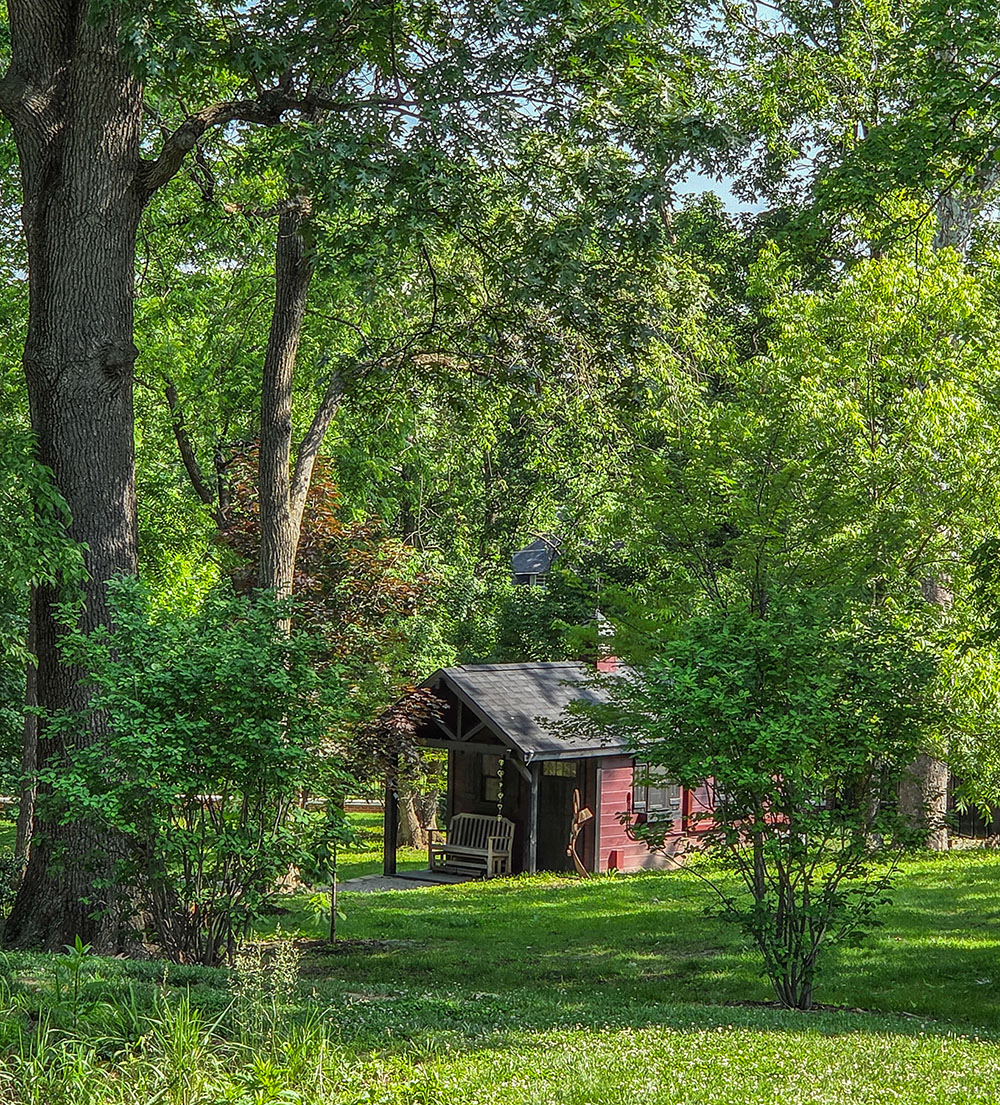In 2023, the Community of the Transfiguration undertook a major land renewal project in their back yard, formerly called the North Lawn. The project was completed and the land was consecrated in 2025 has been christened Transfiguration Gardens. This gently wooded area features walking paths, benches, an outdoor altar, a fountain, a recirculating stream, and a small cabin. This shady space provides a verdant retreat for our Sisters, employees, students and guests. Please read below to get a detailed history and description of the project and the new gardens.

Storm Water Detention System
The entire land and water renewal project on the Convent grounds started with the Sisters’ desire to help reduce the damage caused by storm water from the increasing number of heavy storms which hit this area, year after year. As well as the rain that inundates the Convent grounds and flows to lower elevations, storm water flows onto the property from other, higher locations, requiring further efforts to ameliorate the situation for those further downhill. It is a problem with multiple causes. The Sisters contracted with Ridgewater LLC to construct a series of bioswales which capture and hold back massive amounts of water from upstream, allowing it to seep slowly into the ground rather than flowing off to downhill properties. As you wander the grounds, you will notice also some dry streambeds, lined with rocks, which mostly came from this property. These streambeds are carefully designed to work with the slope of the land to direct stormwater into the bioswales.
Should the bioswales and the additional underground holding system fill up, they release excess water into the recently upgraded Glendale system. The bioswales are also already starting to show how they will add to the beauty of the grounds – enhancing the pleasure of Sisters, neighbors and other guests who enjoy walking around, enjoying the diverse plant life, and sharing the land with birds and other wildlife.
One essential part of the entire Land and Water project has been the careful removal of invasive species; replacing them with healthy, native plants. In the bioswales, deeply rooting native plantings help to absorb storm water, prevent erosion, and attract wildlife, including endangered pollinators. Having been started from both seed and plugs, the native plants are establishing themselves. Their beauty and other benefits will increase each year.
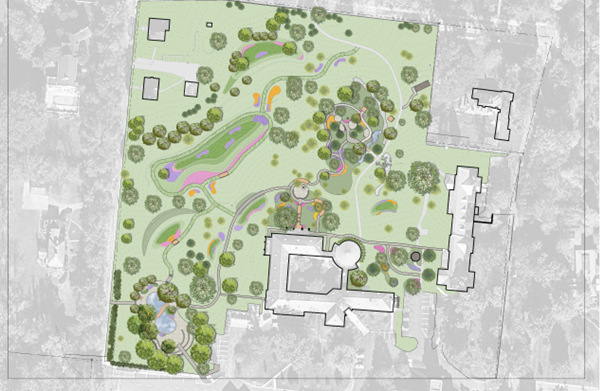
Water Storage for Passive Irrigation
Beneath the bioswales are “holding tanks”, which not only keep storm water from flooding our neighbors when storms get heavy, but make the water easily available during hot, dry weather. There is also, on one end of the second to last bioswale, a large, metal sculpture which has two purposes – to add to visual interest and to show how much water is being held back underground. The Sisters see no reason either to inundate the Village water system unnecessarily during heavy rain events, or to waste perfectly good water when it can be used later to keep the grounds healthy.
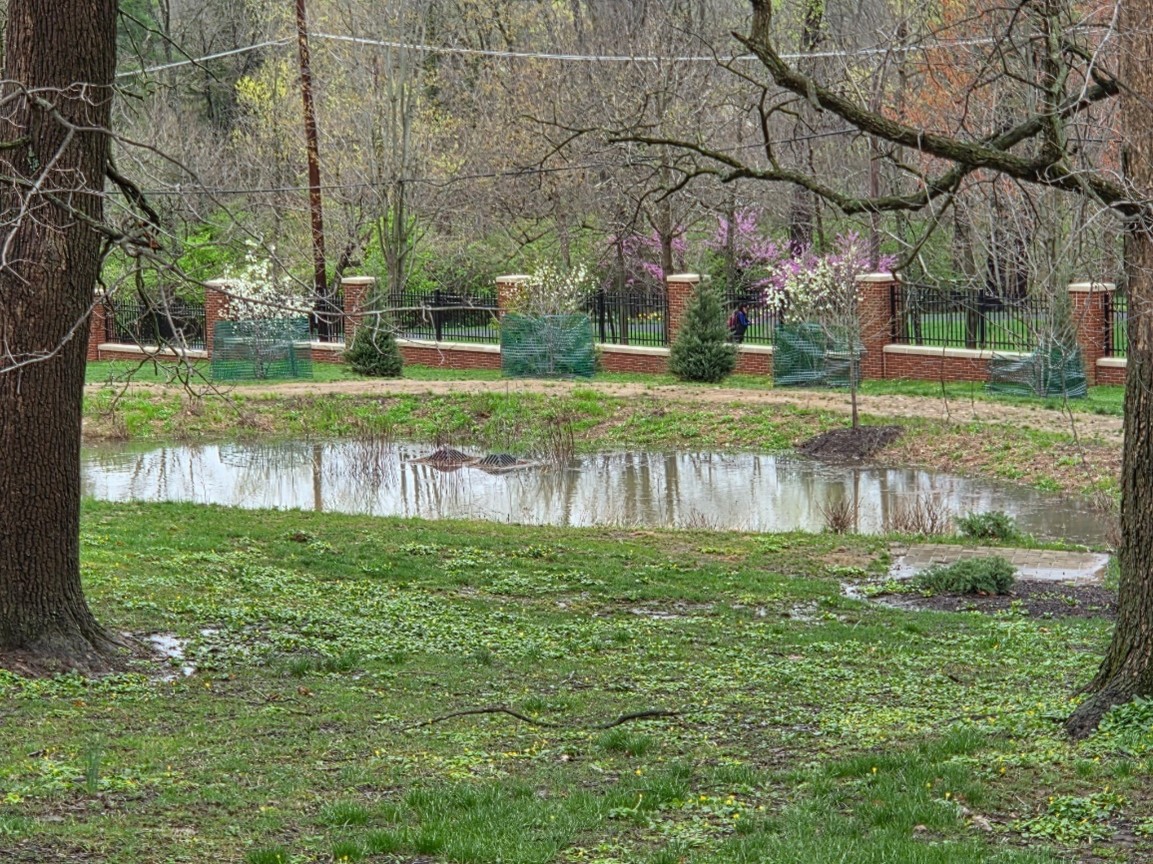
Gathering Terrace and woodland surrounds
We are blessed to have a wonderful variety of large, healthy trees on the grounds of the Convent of the Transfiguration. One of the first things which Rachel Robinson, Landscape Architect, assured us of in our early conversations was her commitment to protect the trees and let them guide the design work she and her team would do. We missed the sound of the birds and other woodland creatures during construction, but they were quick to return practically as soon as the last of the big machines finished its work and was taken away. Part of the enjoyment of our small forest here is being able to make use of the Gathering Terrace, just down from the Convent. For those with healthy knees and hips, there are steps down. Those whose joints are a bit wonky can enjoy a winding, ADA accessible walkway leading to the Terrace. It was an ongoing source of fascination watching the skilled stone workers lay the floor and build the low walls which supply seating for quiet enjoyment or conversation. The gentle music of the fountain adds to the pleasure of using this feature.

Sisters’ Garden and Outdoor Prayer & Worship Space
Further down from the Gathering Terrace, accessible by a couple of winding walkways, the sound of a stream invites exploration. It is both part of the system which directs stormwater into the lower bioswales and a recirculating stream designed to add beauty and enjoyment. The bridge crossing the stream leads into a place of prayer and worship. The crucifix, standing behind and a bit to the left of the new altar, has been in that area for decades, so it is a link between our past and our present. It was a day of great joy when the Bishop of Southern Ohio, the Rt. Rev. Kristin Uffelman White blessed and consecrated the altar. That entire area, part of the Sisters’ Garden, is a place to be open to whispers of love, to the presence of the Holy One of Many Names who speaks in birdsong, in breezes and rustling leaves, in silence, in the still small voice within our hearts.
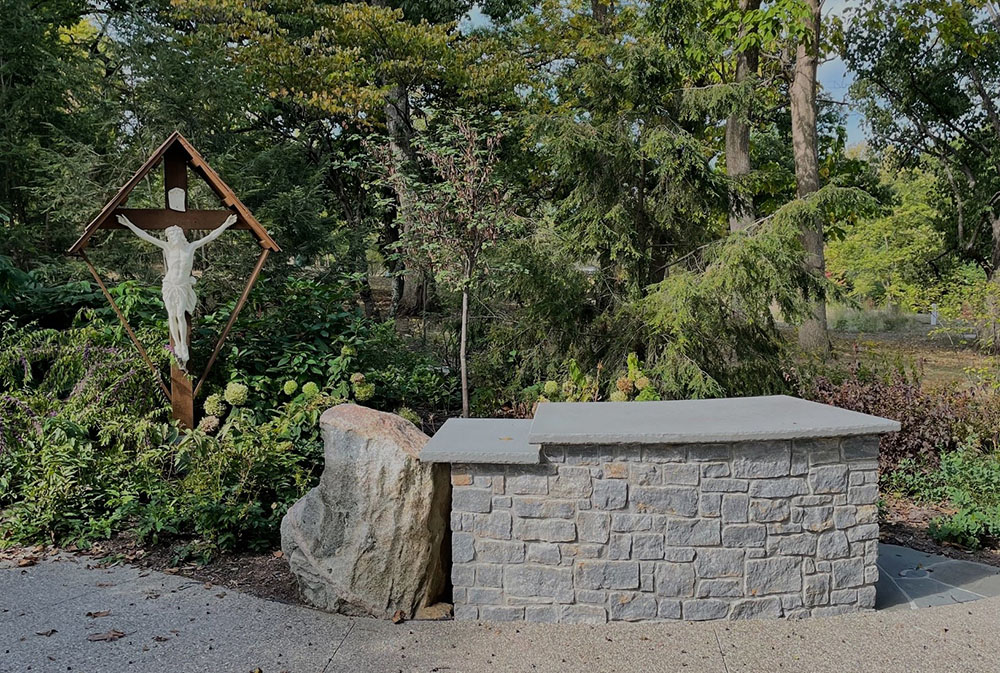
Indigenous Peoples’ Garden
An unfinished part of this land and renewal project, part of a dream the Sisters have, is found in the Indigenous People’s Garden, set to the right of the pathway which leads down toward the bridge and the Worship Space. The plants in it are among those which the Myaamia people, who lived in this area, would have known and cultivated for various uses. One essential reason that the garden is unfinished is that it would be thoroughly inappropriate for us to pretend to enough knowledge and wisdom to do it in such a way as to honor the people who were brutally forced off of this land. We cannot gain the right kind of knowledge from books and the internet, but only through relationship. We will tend the plants, care for the land, and reach out with the respectful hope of meeting people whose ancestors lived in this area. Where this dream will take us, we do not know. We wait. We pray. We listen.
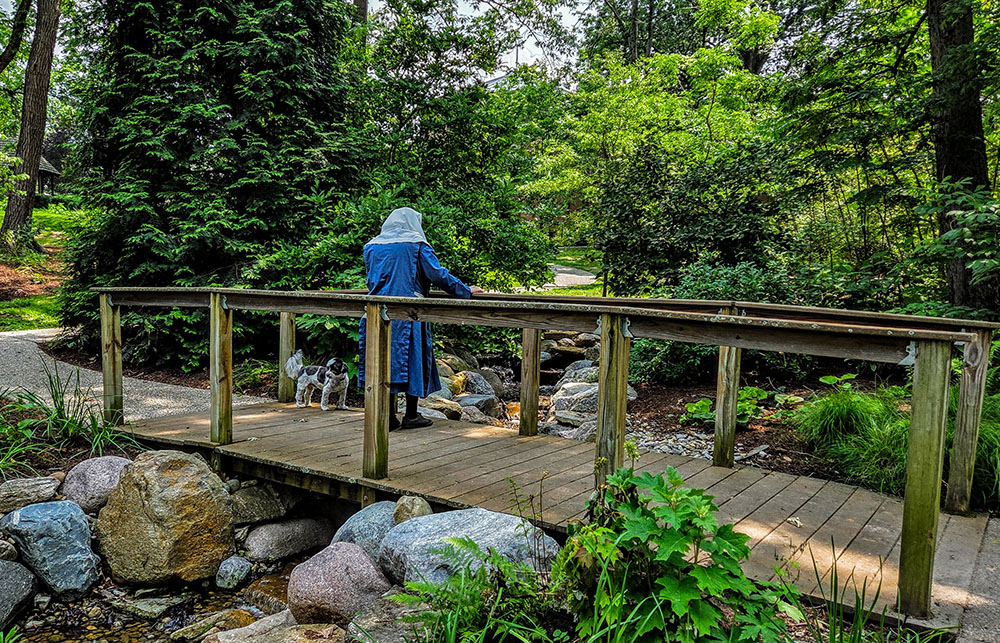
The Cabin
The welcoming small, Amish-built cabin below the Indigenous Peoples’ Garden was a gift from a friend and Associate of the Community, Dana Connelly. It can be reserved through the Transfiguration Spirituality Center by Sisters, guests, retreatants, and others as a place of prayer, quiet, and privacy. From the cabin, it is possible to hear the music of the recirculating stream as well as the many choirs of birds who provide song all over the grounds. It has electricity, heat, and air conditioning, but not plumbing.
